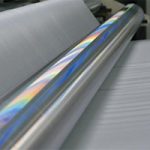Specifications
PVB Film
| Item | Specifications | Note: 1.Colorless glass(2mm)+interlayer film(0.38)+Colorless glass(2mm).2.Measurement under condition of 20℃ and 40% relative humidity.3.It is be able to adjust according to customer’s requirements.4.Measurement after 15 minutes under the conditions of 40℃ and 40% relative humidity.5.The date of interlayer film of HI(Automotive windshields) and ST(Architectural glass)are different,both sample should be tested with -18℃ after 2 hours. |
|||||
| Density | 1.069g/cm³ | Note 1 | |||||
| Transmittance | ≥88.5% | Note 1 | |||||
| Refractive Index | 1.47-1.50 | Note 1 | |||||
| Tensile Strengtn | ≥20Mpa | Note 2 | |||||
| Elongation at break | ≥200% | Note 2 | |||||
| Moisture | 0.35-0.55% | Note 3 | |||||
| Ration of shrinkage | <6% | Note 4 | |||||
| Test of strike | 3-9 | Note 1 | |||||
| Deviation of width | expected value +10mm | ||||||
Packing& Storage
| Packing | Every layer of PVB film rolls should be separated by PE film and vacuumed by aluminum foil,and put into wooden cases or paper drum. | |||||||
| Storage | The product should be stocked in clean warehouse. It is prohibited to keep the product under direct sunlight. | |||||||
| Shipping | Avoid exposing to the sun and rain and vigorous shaking during transportation. | |||||||
Frequently Asked Questions
What is PVB Film and what is PVB film used for ?
PVB intermediate film is a translucent film made of polyvinyl butyric aldehyde resin plasticized and extruded by plasticizer. The appearance is translucent film, no impurities, the surface is flat, has a certain roughness and good softness, has a good adhesion to inorganic glass, has transparent, heat resistance, cold resistance, wet resistance, high mechanical strength characteristics, is the current manufacturing sandwich, reliable glass adhesive material. At the same time in the building curtain wall, awning, window, bank counter, prison window, steel furnace screen and a variety of bulletproof glass and other architectural fields are also widely used.
What is PVB Film’s original material?
PVB intermediate film is mainly made of PVB resin. PVB resin is a high molecular compound obtained by the reaction of polyvinyl alcohol and butyraldehyde under the catalysis of strong acid.
PVB resin is non-toxic, odorless, non-corrosive, non-flammable, with good light transmission, insulation, weather resistance, wear resistance, water resistance, oil resistance, aging resistance, inorganic and organic glass has special bonding and light transmission properties. Can be used as a safety glass sandwich material, and can be used as other transparent materials.
Advantages of using resin as raw material.
Safety glass produced by all-resin PVB film has better optical properties, higher light transmission and lower fog, so that the finished glass transparency is higher, such as superposition using multiple layers of PVB to make laminated glass, the advantage of all-resin PVB will be more obvious, and secondly, the yellowing value of the film is very low, the film is white, so that the finished glass will not be yellow, suitable for ultra-white laminated glass.
All-resin film has higher durability, can withstand the sun and rain, and will not produce bad phenomena such as degumming, bubbles and aging after long-term use.
Raw materials are the main elements that affect the transmittivity and durability of PVB film, because our film is produced by all-resin, the polymer material in the film is not easy to age, which greatly improves the purity of the production material.

